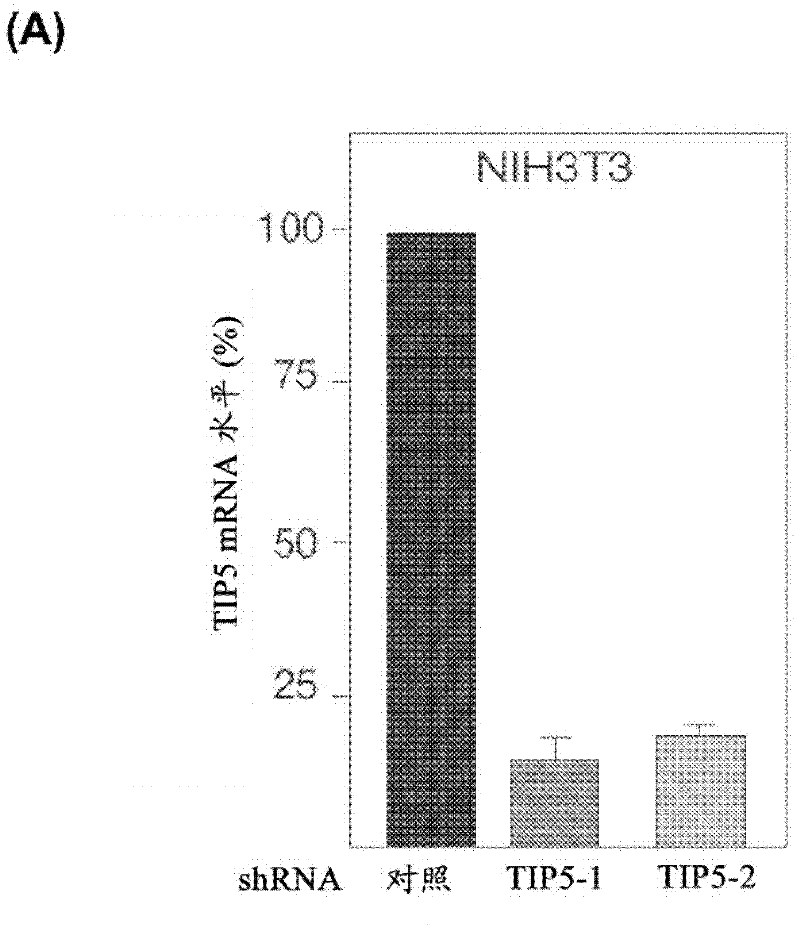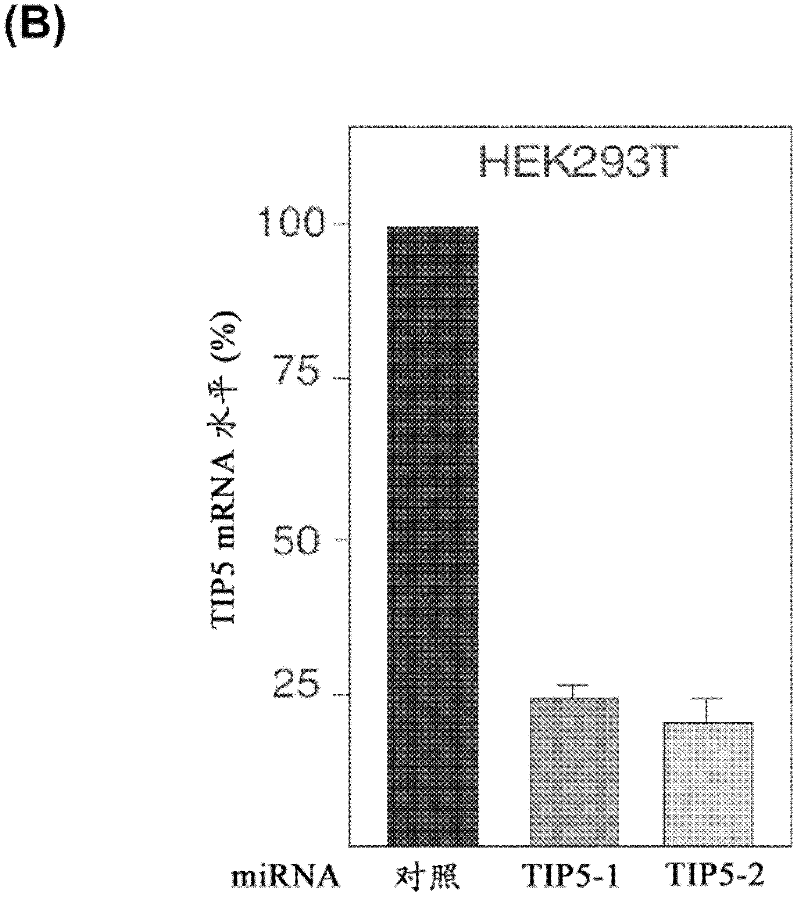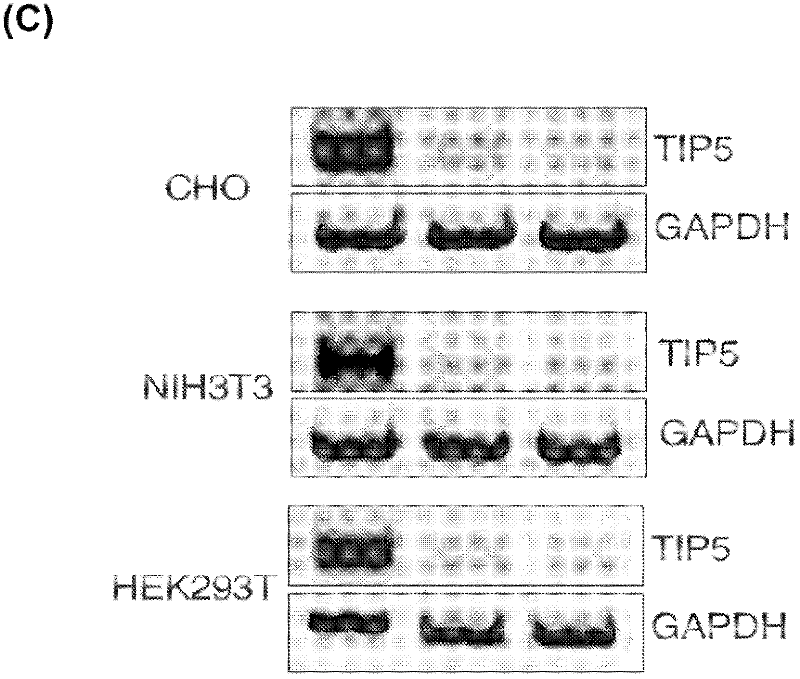Improved cell lines having reduced expression of NOCR and use thereof
A cell and host cell technology, applied in the field of cell culture, can solve problems such as reduced protein production, achieve the effects of reducing production costs, increasing protein production, and accelerating drug development
- Summary
- Abstract
- Description
- Claims
- Application Information
AI Technical Summary
Problems solved by technology
Method used
Image
Examples
Embodiment 1
[0239] Example 1: Knockdown of TIP-5
[0240] In order to engineer cells to increase the synthesis of recombinant proteins, we determined whether the decrease in the number of silenced rRNA genes promotes the synthesis of pre45S rRNA, and therefore also stimulates ribosomal biosynthesis and increases the number of ribosomes that can be translated. Therefore, we use RNA interference to knock down the expression of TIP5, and use shRNA / miRNA sequences specific to two different regions of TIP5 (TIP5-1 and TIP5-2) to construct NIH / 3T3 for stably transgene expression shRNA or for expression of miRNA HEK293T and CHO-K1. A stable cell line expressing mixed shRNA and miRNA sequences was used as a control. There are two reasons for generating stable cell lines instead of transient transfection using plasmids expressing shRNA-TIP5 or miRNA-TIP5 sequences. First, the loss of epigenetic genetic markers such as CpG methylation inhibition is a passive mechanism that requires multiple cell div...
Embodiment 2
[0241] Example 2: Knockdown of TIP-5 leads to a decrease in rDNA methylation
[0242] In NIH / 3T3 cells, about 40% to 50% of rRNA genes contain CpG methylation sequences and are transcriptionally silent. The rDNA promoter sequence and CpG density between humans, mice and Chinese hamsters are significantly different. The human rDNA promoter contains 23 CpGs, while the mouse and Chinese hamsters contain 3 and 8 CpGs respectively ( figure 2 A-C). To confirm that knockdown of TIP5 can affect rDNA silencing, we determined the rDNA methylation level by measuring the amount of meCpG in the CCGG sequence. Genomic DNA was digested with HpaII, and the resistance to digestion (ie CpG methylation) was determined by quantitative real-time PCR using primers containing HpaII sequence (CCGG). In all cell lines knocked down TIP5, most of the rRNA genes in the promoter region of CpG methylation decreased, confirming that TIP5 plays a key role in promoting rDNA silencing ( figure 2 ).
[0243] No...
Embodiment 3
[0244] Example 3: Increased rRNA levels in cells knocked down TIP-5
[0245] To determine whether the reduction in the number of silenced genes will affect the amount of rRNA transcripts, we used qRT-PCR ( image 3 A) And by incorporation of BrUTP in vivo ( image 3 B), the 45S pre-rRNA synthesis is measured. As expected, both NIH / 3T3 and HEK293T cells with reduced TIP5 produced more rRNA than the control cell line measured in both analyses.
PUM
 Login to View More
Login to View More Abstract
Description
Claims
Application Information
 Login to View More
Login to View More - R&D
- Intellectual Property
- Life Sciences
- Materials
- Tech Scout
- Unparalleled Data Quality
- Higher Quality Content
- 60% Fewer Hallucinations
Browse by: Latest US Patents, China's latest patents, Technical Efficacy Thesaurus, Application Domain, Technology Topic, Popular Technical Reports.
© 2025 PatSnap. All rights reserved.Legal|Privacy policy|Modern Slavery Act Transparency Statement|Sitemap|About US| Contact US: help@patsnap.com



